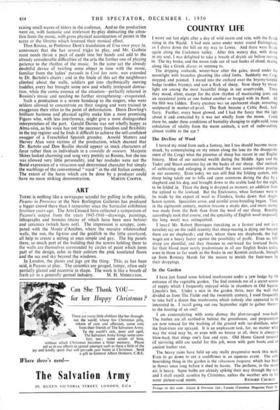The Decline of Wool I turnzd my mind from such
a fantasy, lest I too should become moon- struck, by contemplating on my return along the lane (to the disappoint- ment of the Corgi) what the presence of sheep has meant in our English history. Most of our national wealth during the Middle Ages and the Tudor and Stuart centuries lay on the backs of our sheep. Our methods of cultivating and enlarging it remained the most conservative practice in our economy. Even- today we can still find the folding system, with sheep being taken out to hills and open commons during the day by a shepherd and his dog, and brought down to the arable lalid for the night, to be folded in. There the dung is dropped as manure, an addition from the upland to the lowland. But the Enclosures, when fortunes were to be made by the export of wool to Flanders, broke down that Anglo- Saxon system. Specialists arose, and careful cross-breeding began. Then, in the eighteenth century, mutton became a staple diet, and more money was made from the flesh than from the wool of our sheep. Breeding accordingly took that course, and the speciality of English wool (especially the long wool) was relinquished.
I heard Mr. Robert Henriques (speaking as a farmer and not as a novelist) say on the radi8 recently that sheep-rearing is dying out because there are no shepherds ; and that, where there are shepherds, the high wages are a heavy factor against the possibility of profit. Even so, hill- sheep are plentiful, and they threaten to out-breed the lowland flocks, for their blood must surely predominate in all our English flocks today, even in those so far south as the flocks in our Kentish orchards, brought up from Romney Marsh for the season to enrich the fruit-trees by their droppings.






































 Previous page
Previous page